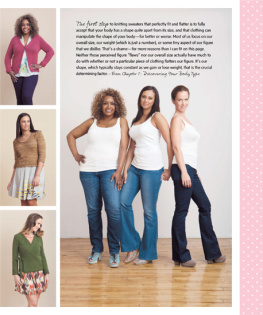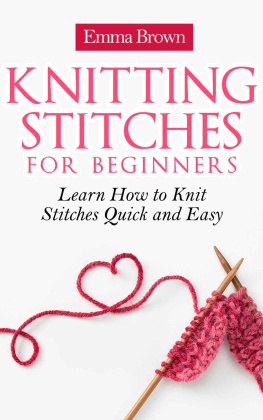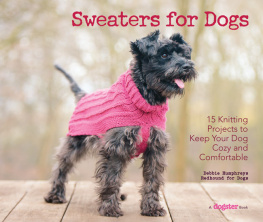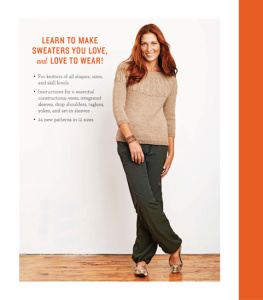
Published in 2013 by Stewart, Tabori & Chang
An imprint of ABRAMS
Text copyright 2013 by Amy Herzog
Photographs copyright 2013 by Karen Pearson
All rights reserved. No portion of this book may be reproduced, stored in a retrieval system, or transmitted in any form or by any means, mechanical, electronic, photocopying, recording, or otherwise, without written permission from the publisher.
Library of Congress Cataloging-in-Publication Data
Herzog, Amy, 1975
Knit to flatter / by Amy Herzog.
pages cm
STC Craft/A Melanie Falick Book.
Includes bibliographical references and index.
ISBN 978-1-61769-017-4 (alk. paper)
1. KnittingPatterns. 2. Clothing and dress measurements. I. Title.
TT825.H475 2013
746.432dc23
2012022908
Editor: Liana Allday
Designer: Meg Mateo Ilasco
Production Manager: Tina Cameron

115 West 18th Street
New York, NY 10011
www.abramsbooks.com
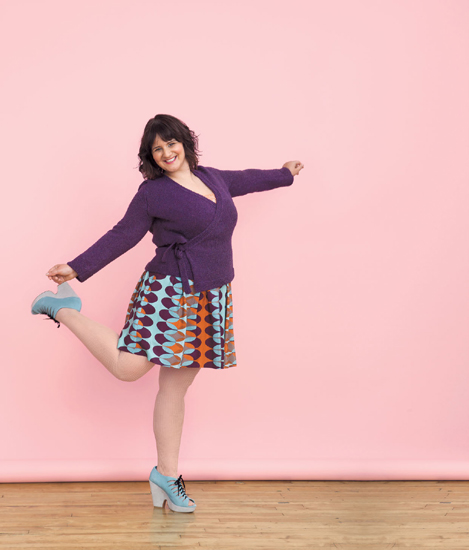
CONTENTS
INTRODUCTION
The seed for this book was planted when a friend and I were chatting about a sweater she had just finished knitting. She was unhappy with the result, and we talked for a while about all of the different ways this sweater disappointed her. The thing I found most striking in our discussion was her attitude of resignation toward the whole experience as though she had had no control over the process. It shocked me to hear this from someone I knew to be a very experienced and accomplished knitter.
This theme is pervasive in the knitting community (both on- and offline). On Ravelrys project pages, sweater after sweater is shown off the body, laying lifeless on a table or on a dress form. Its a nice sweater, and the pattern was great, but Im not thrilled with how it looks on me. Why do we feel this way about a process we control from start to finish?
As knitters, we have the power to create a perfectly flattering sweater every single time. If we look acceptingly at our figures (instead of pining for unrealistic changes), we can use our power effectively and create wardrobe staples. Dont get me wrong: This takes a bit of a paradigm shift and a bit of skill! You need to look at your figure with kindness; you need to approach patterns as a partnership between you and the pattern designer; and you need to be confident in your ability to make modifications.
If that sounds daunting, dont worry! These pages will give you all of the tools you need to make sweaters that fit you perfectly and flatter your figure, too.
Before I get into the details, though, Id like to set the record straight on flattering clothing. Beauty is in the eye of the wearer. Favorite sweaters, like all favorite clothing, are pieces that make you feel great when you wear them. For many knitters, feeling great means feeling attractive, and that might mean looking slender, curvaceous, or proportional. For other knitters, it does not. Both attitudes are fine! This book is not intended to be restrictive. It does not contain a rigid set of rules. It is intended to help you knit sweaters that you want to wear.
All of that being said, here is my philosophy on how to create flattering sweaters: Start by choosing patterns that will make your bodys natural shape look more balanced. For instance, if you have a large bust and narrow hips, you might want to incorporate features that will strike a balance between your top and bottom; if you dont really have curves, you might want to play with features that will give you more of an hourglass shape. Of course, should you desire a different result, you can use the principles presented in each chapter to achieve whatever look you wantfrom playing up a larger bust to creating a long, straight shape, or anything else you fancy.
To that end, this book is part pattern collection and part guidebook, and you can read it cover to cover, from basic principles to tailored patterns to modification advice. Or, if you prefer, you can study each chapter as an individual unit. Here is an overview of each chapter:
: Discovering Your Body Type. In this chapter, youll get ultrafamiliar with your own beautiful bod. Learn how clothing affects the appearance of your shape, and take the measurements youll need to knit your next favorite sweater. Also learn why the pieces in this book are constructed with set-in sleeves, what ease means, and how to pick your perfect size.
: Top-Heavy Shapes. In this section, youll learn how to flatter bodies with broader shoulders and/or larger busts with patterns designed to make these shapes shine.
: Bottom-Heavy Shapes. Here youll learn how to flatter bodies with broader hips and/or thighs with patterns designed to balance the bottom-heavy figure.
: Proportional Shapes. In this chapter, youll learn how to flatter bodies with balanced proportions, with designs meant to preserve your proportional figure.
: Other Figure Features. Big bust? Curvy waist? Ample tummy? This chapter shows you how to accommodate the things that make your body unique.
: Modifications. In this chapter, youll learn the ins and outs of modifications: whats easy, whats not, and how to do it all.
As you read (and knit!) from this book, the skills you acquire will allow you to create sweaters that fit perfectly. But please dont get too hung up on knitting the right thing. This includes limiting yourself to the sweaters in your chapter. If you love a pattern, go for it! The sweaters in this book were designed so they can be easily modified and customized for many different bodies. (Ive even given you some ideas on how to do that at the end of each pattern and in , so if theres a sweater youre dying to have, dive in!)
You are gorgeous, readers. Lets help you knit sweaters that make you feel that way, too.

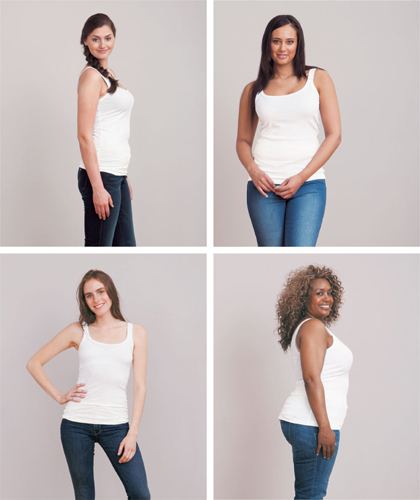
DISCOVERING YOUR BODY TYPE
All fired up to knit your new favorite sweater? Excellent! But before you pick up your needles, you need to gather some stats about your body. Grab your camera, a measuring tape, and (maybe) a glass of wineits time to discover your bodys true shape!
Understanding Body Shapes
The concept of body shape has been around for a long time. The standard fruit-or-vegetable comparisons are familiar to us all but dont exactly tell us a lot of useful information (besides, who wants to be compared to a pear or an apple?). In order to knit sweaters that fit perfectly and flatter, its important to have a clearer understanding of your form.
The first step is to fully accept that your body has a shape, quite apart from its size, and that clothing can manipulate the shape of your bodyfor better or worse. Most of us focus on our overall size, our weight (which is just a number), or some tiny aspect of our figure that we dislike. Thats a shamefor more reasons than I can fit on this page. Neither those perceived figure flaws nor our overall size actually have much to do with whether or not a particular piece of clothing flatters our figure. Its our shape, which typically stays constant as we gain or lose weight, that is the crucial determining factor.
Next page
